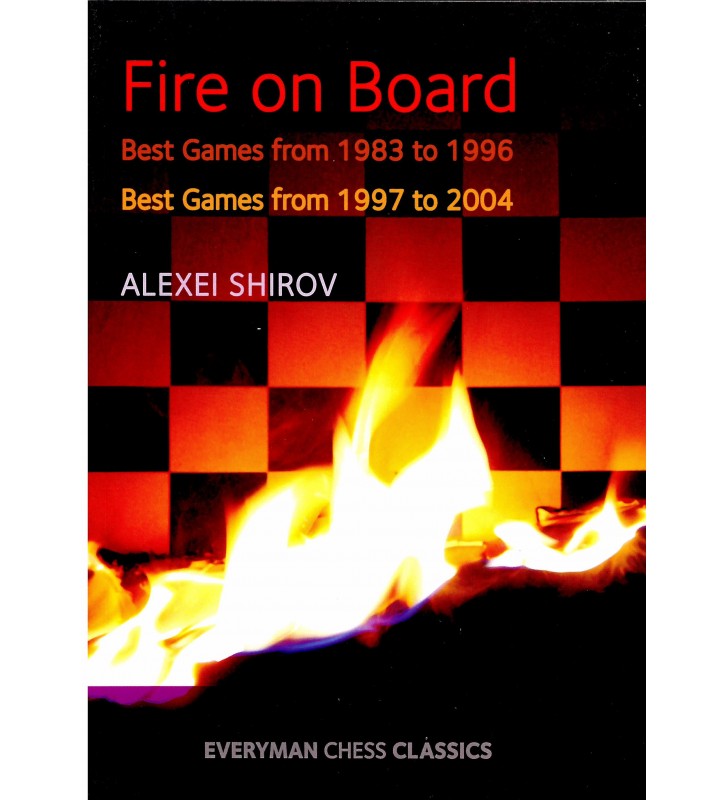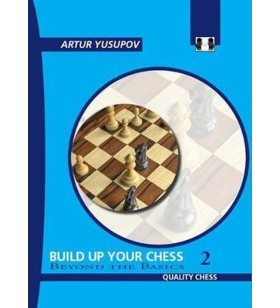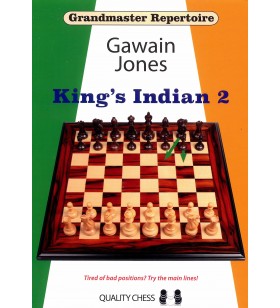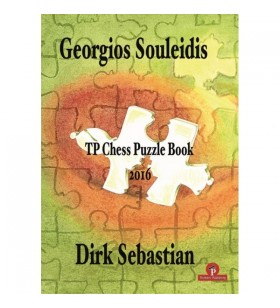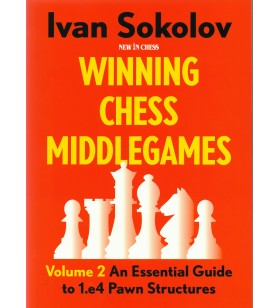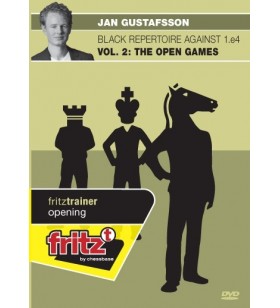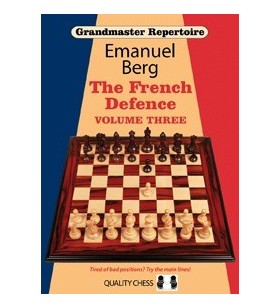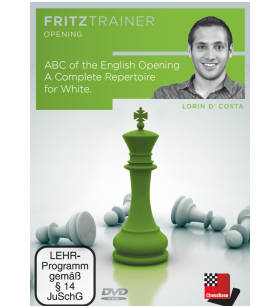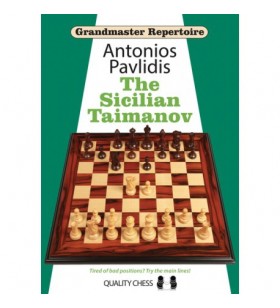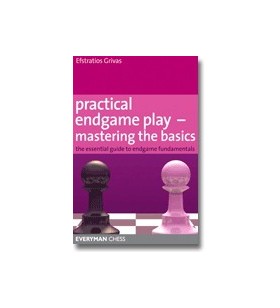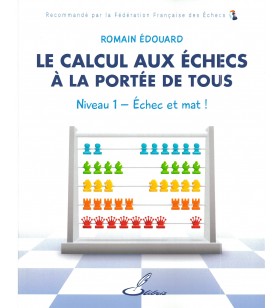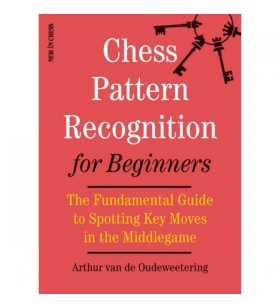- CHESS
- Chess boards and pieces
- Chess books
- Chess books in English and others
- Opening books
- The Ruy Lopez
- Other open games
- Other semi-open games
- The Sicilian
- French Defence
- Pirc & Modern Defence
- Caro-Kann
- Queen´s Gambit
- Slav Defence & Semi-Slav
- Other closed games
- Other semi-closed games
- King´s Indian Defence
- Nimzo & Queen´s Indian
- Grünfeld
- English Opening
- Dutch Defence
- Miscellaneous openings
- General and repertoire books
- Endgame books
- Books on grandmasters
- Books on tournaments
- Books in Dutch
- Miscellaneous
- Chess magazines
- General and middle game books
- Opening books
- Chess books in French language
- Chess books in English and others
- Chess software and DVDs
- Chess computers
- Equipment for clubs
- BOARD & BRAIN GAMES
- GO
- BRIDGE & CARDS & TAROT
- POKER & CASINO GAMES
- PUZZLES & BRAIN TEASERS
- DARTS
Shirov - Fire on Board
 Livraison sous 48 heures via Bpost*
Livraison sous 48 heures via Bpost*
Livraison gratuite à partir de €69 (Belgique, France, Pays-Bas, Luxembourg, Allemagne)
 You can cancel your order
You can cancel your order
For fourteen days!
 Secure payments
Secure payments
All payment cards accepted.
16 other product
Sokolov - Winning Chess Middlegames
Have you ever wondered why it takes grandmasters just seconds to see what's happening in a chess position? It's all about pawn structures, as Ivan Sokolov explained in his groundbreaking book Winning Chess Middlegames.
In his 2010 bestseller, Grandmaster Sokolov focused on structures arising from 1.d4 openings; in this new companion guide, 1.e4 players get their turn. This new volume covers a dozen topical structures including various pawn formations in the flexible Ruy Lopez, Italian and Petroff openings. But also Black's doubled f-pawn in the Rauzer Sicilian, the notorious Maroczy Bind, the mysterious Hedgehog, the versatile Sveshnikov and the paradoxical French Winawer. Deeply analysed top-level games illustrate the motifs in all these structures.
Club players who study Winning Chess Middlegames 1.e4 or 1.d4 will:
- significantly improve their middlegame skills
- develop an accurate sense of which positions suit their style
- gain new strategic and practical knowledge of openings
Ivan Sokolov's analysis is profound but accessible, and he doesn't take anything for granted. As reviewer Sean Marsh wrote of the first volume: "The lucid and informative explanations convey a large amount of genuine Grandmasterly wisdom. This is easily one of the best middlegame books of recent times."
Ivan Sokolov is a top grandmaster who was born in Bosnia and lives in the Netherlands. He is a former Yugoslav and Dutch Champion and has beaten World Champions Garry Kasparov, Vladimir Kramnik and Viswanathan Anand. As a coach, he led Uzbekistan to victory at the 2022 Chennai Olympiad. Sokolov has written a dozen highly acclaimed books.
MARIN - English 1.c4 e5 CD Rom
Gustafsson: Black Repertoire against 1.e4 - Vol. 2: Open Games DVD
Processeur Pentium à 300Mhz ou +
64MB RAM
Windows XP, Windows VISTA, Windows 7
Lecteur de DVD, souris, carte son
Edouard - Le calcul aux échecs à la portée de tous
Romain Edouard, auteur de qualité et joueur de haut niveau, nous propose un ouvrage sur le calcul aux échecs, lorsqu'il s'agit de mettre votre adversaire échec et mat.
Au menu, 8 chapitres; dans les trois premiers, des exercices tactiques standards, avant que les choses se compliquent. Au quatrième, il vous faudra enfermer le roi adverse, au cinquième, votre tâche sera de l'emporter en éliminant le défenseur clé, dans le sixième, c'est une double menace qui fera la différence, dans le huitième, des sacrifices et enfin dans le huit et dernier chapitre on retrouvera quelques problèmes différents, un peu de tout. Il est conseillé d'utiliser le livre dans l'ordre chronologique, car la complexité des exercices s'accroît au fil de l'ouvrage. Au total 276 exercices. 130 pages.
Customers who bought this product also bought:
MULLER, LAMPRECHT - Fundamental Chess Endings
KASPAROV - My Great Predecessors part II
Le voilà donc, ce deuxième tome tant attendu - et juste à temps pour Noël. On y (re)découvre les carrières et les parties de Max Euxe, Mikhail Botvinnik, Vassily Smyslov et Mikhail Tal, avec des exposés plus brefs sur quelques-uns de leurs principaux challengers (Keres, Bronstein, Geller). Comme on pouvait l'espérer, on retrouve ici un Kasparov plus impliqué, tant dans l'historique (puisqu'il s'agit de joueurs qu'il a pu connaître, et pour certains affronter) que dans les analyses. Inutile d'en dire beaucoup plus : c'est de la belle ouvrage, en dépit des quelques défauts inhérents à la formule (parties souvent très connues et parti-pris simplificateur sur le plan historique - 100 pages sur Euwe, mais rien sur Reshevsky, Fine, Boleslavsky ou Najdorf...). On attend en tous cas avec impatience le troisième tome - mais patience, aucune date n'est encore annoncée.

 Français
Français Nederlands
Nederlands English
English